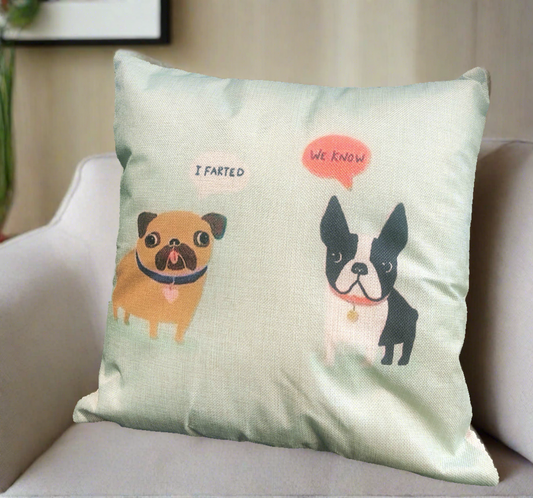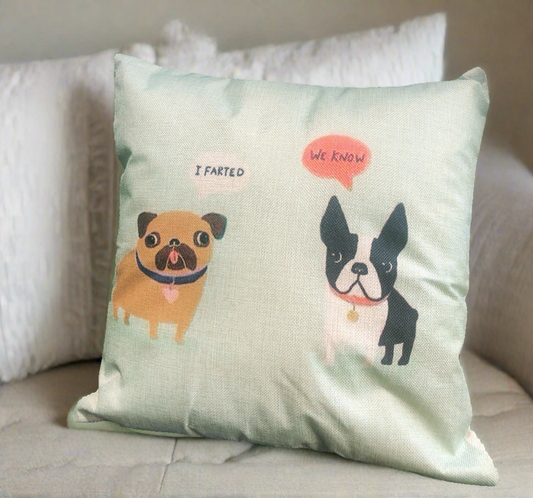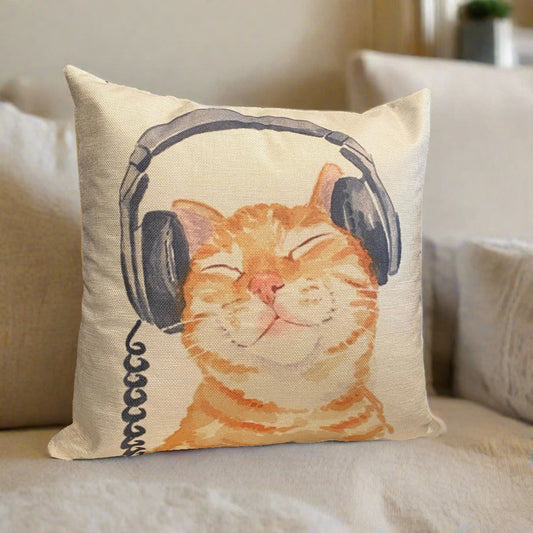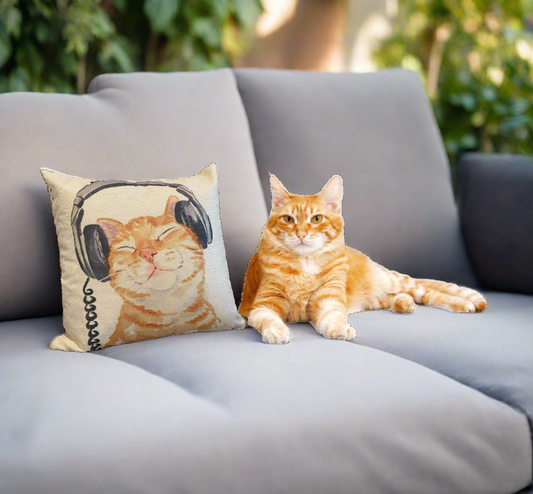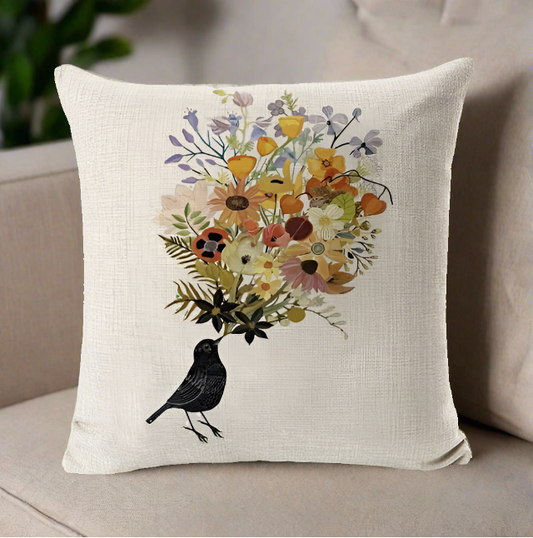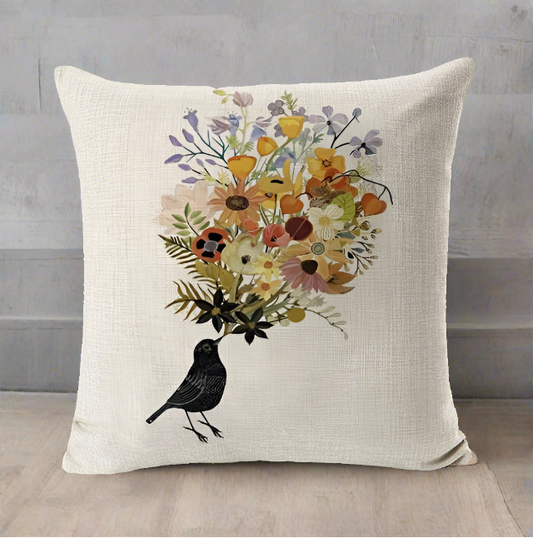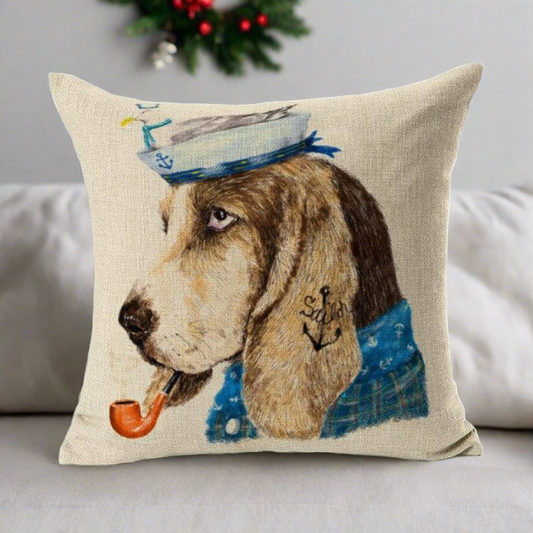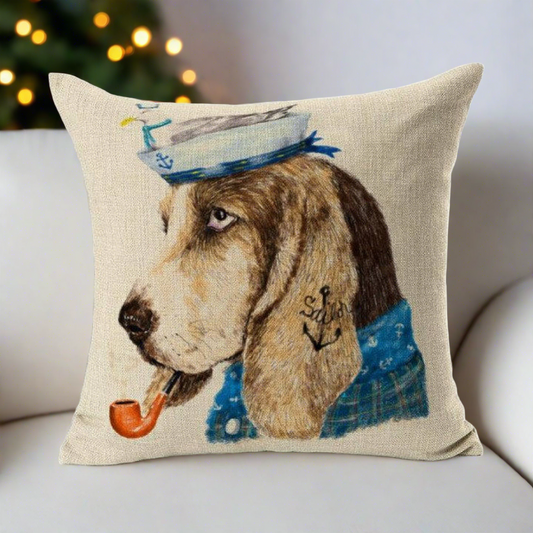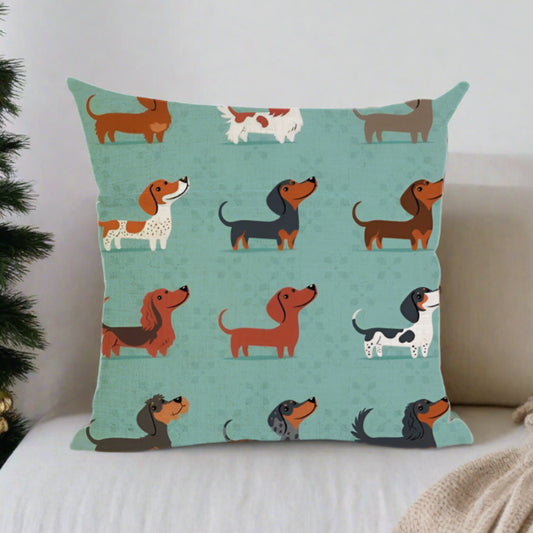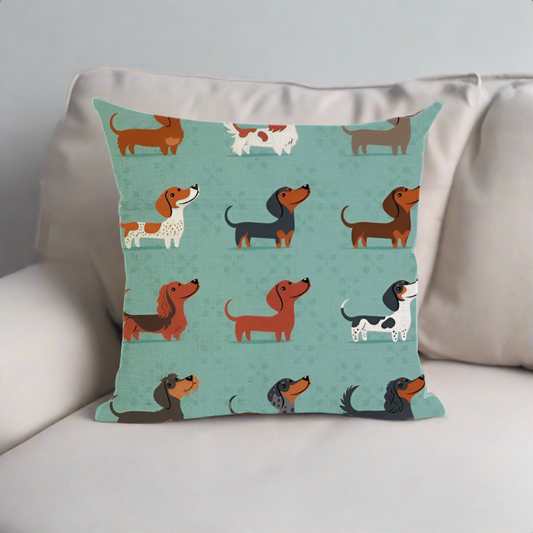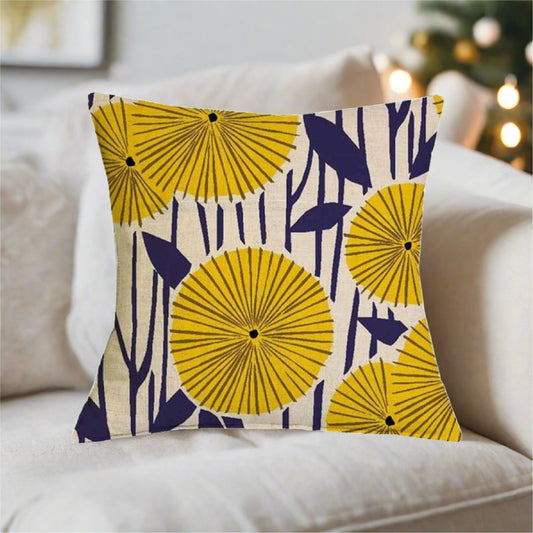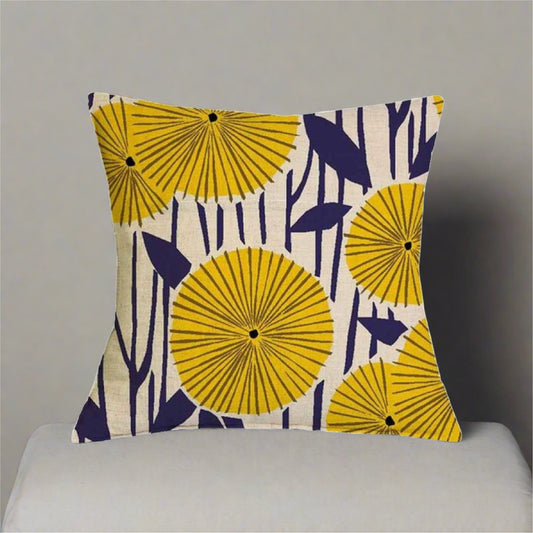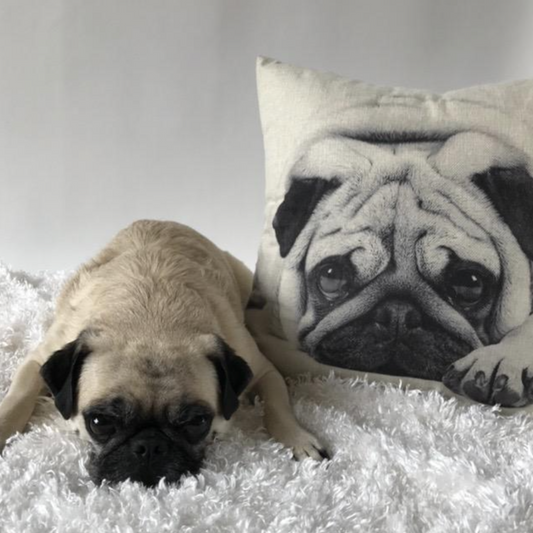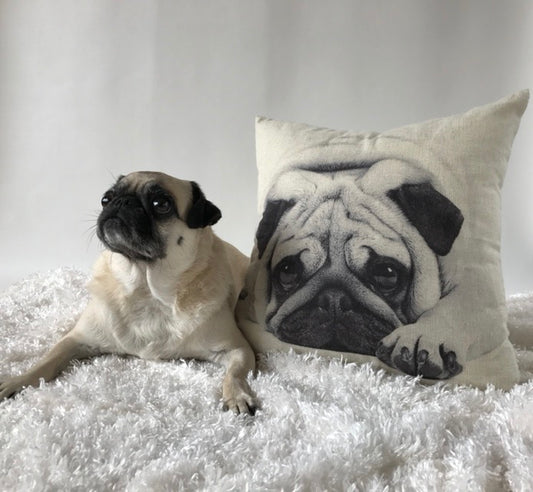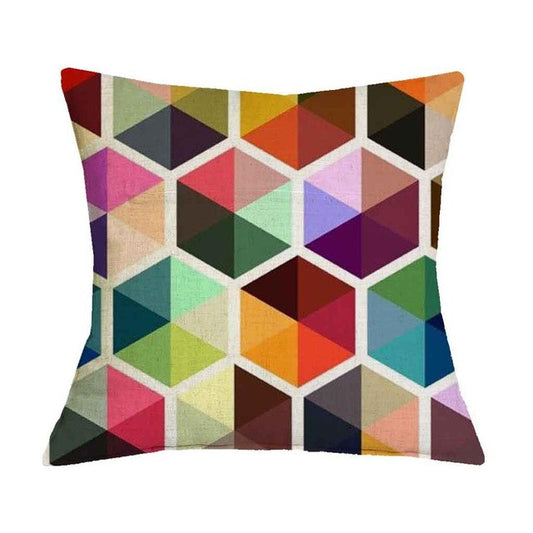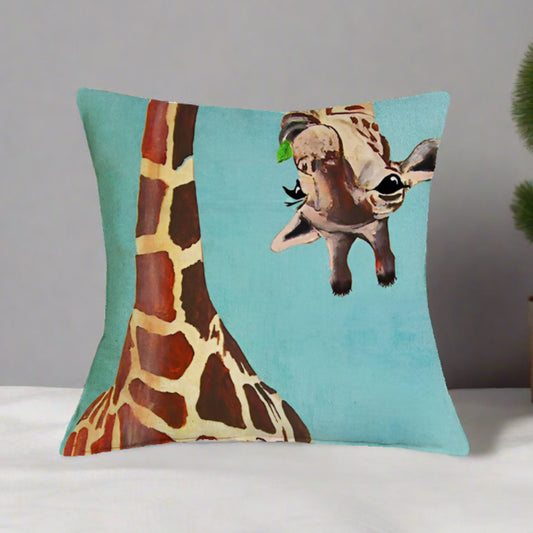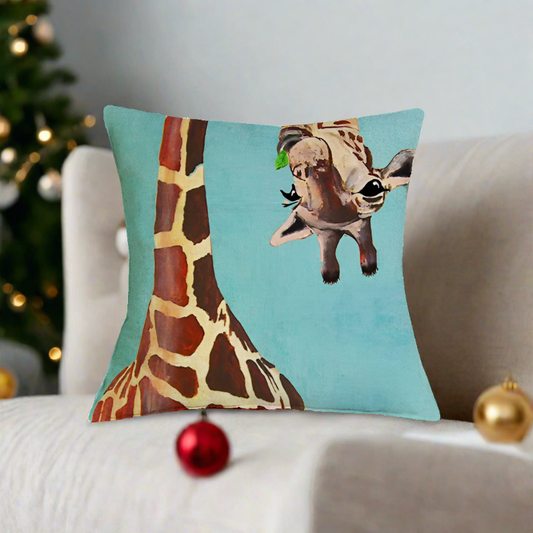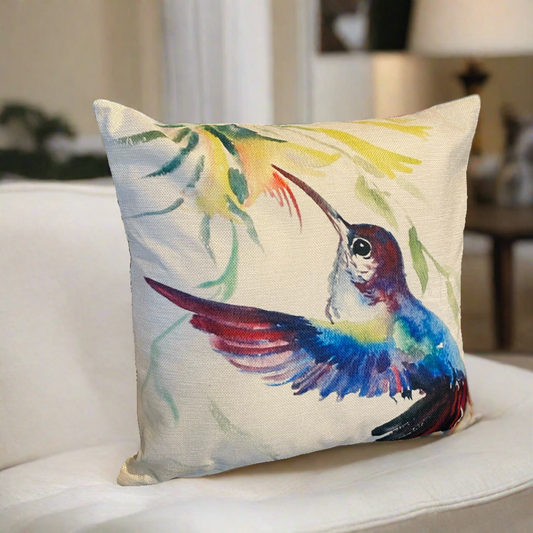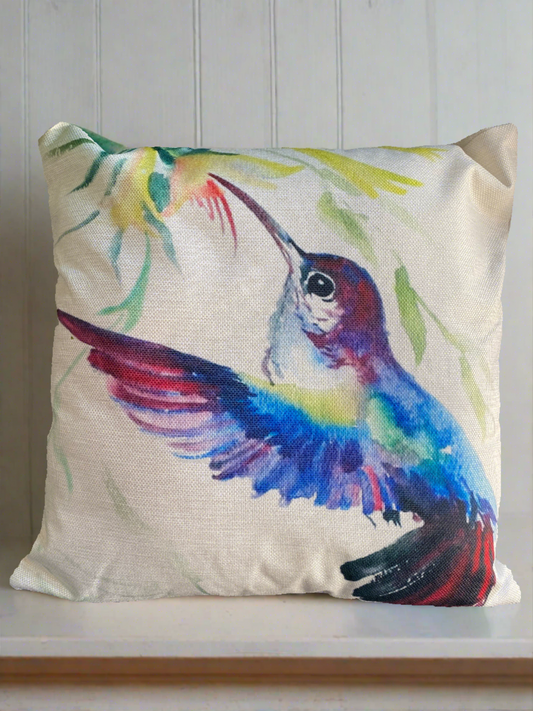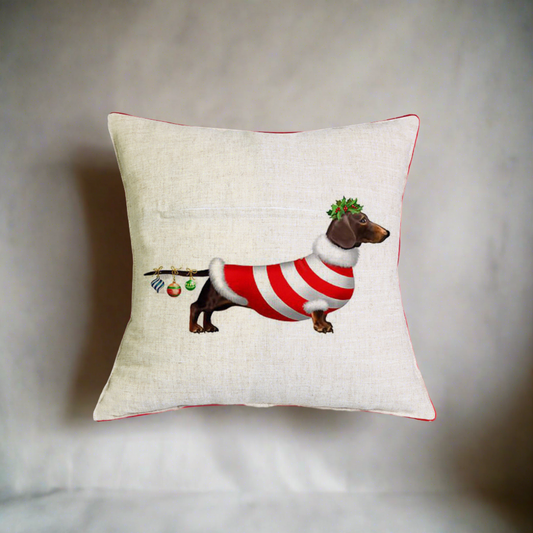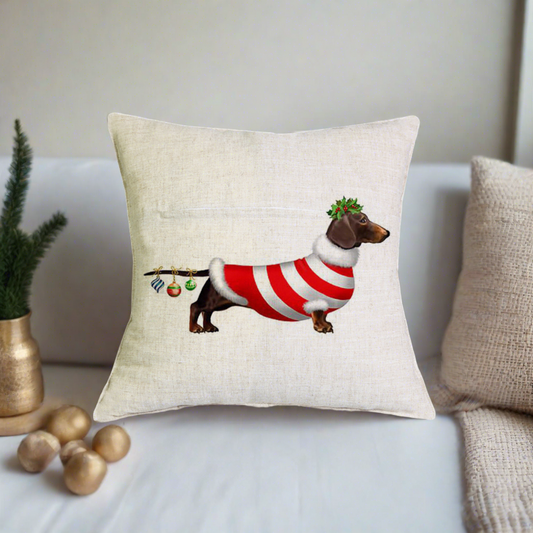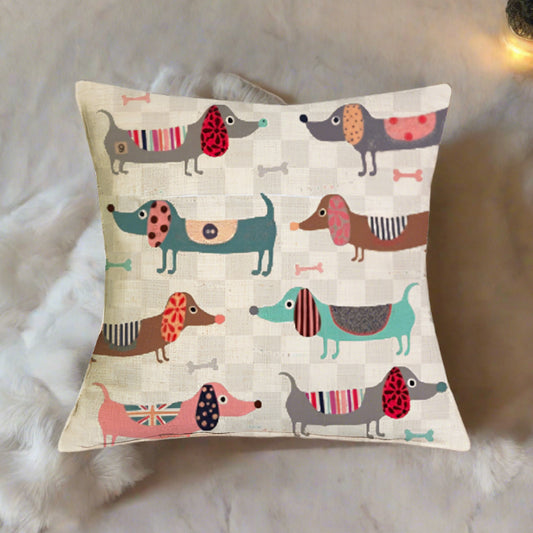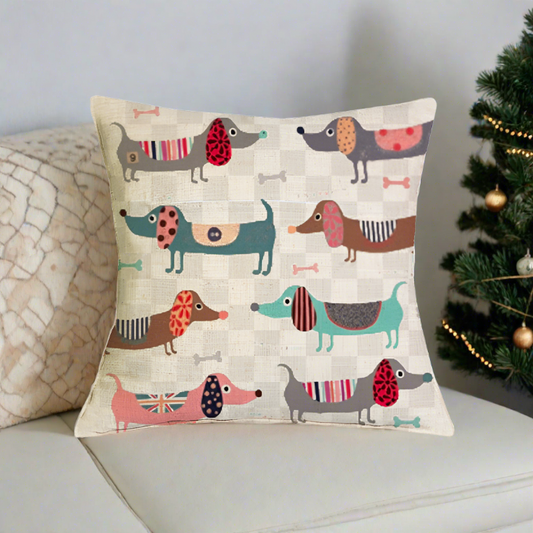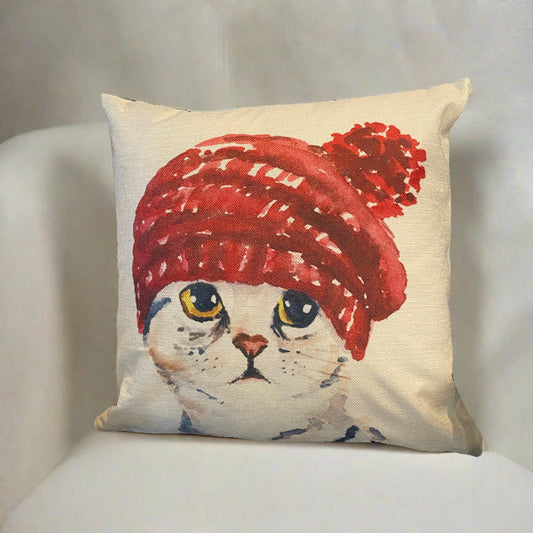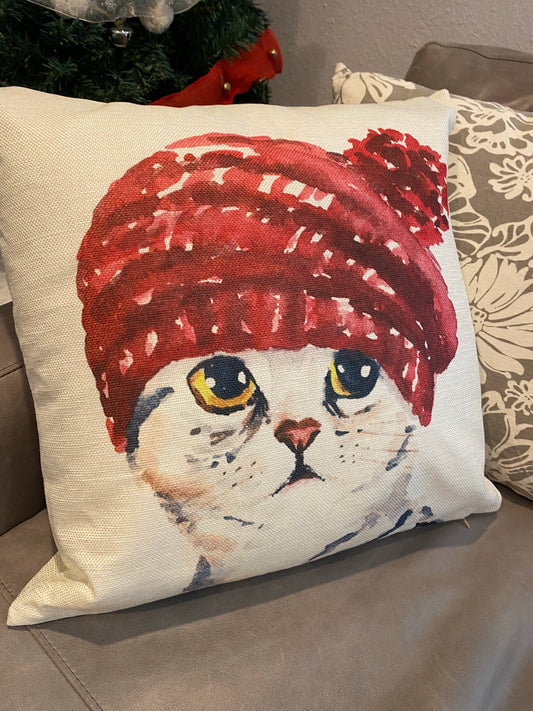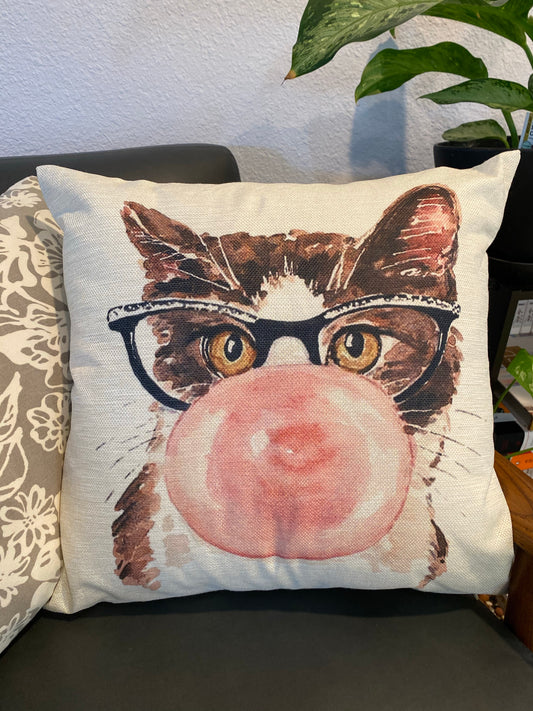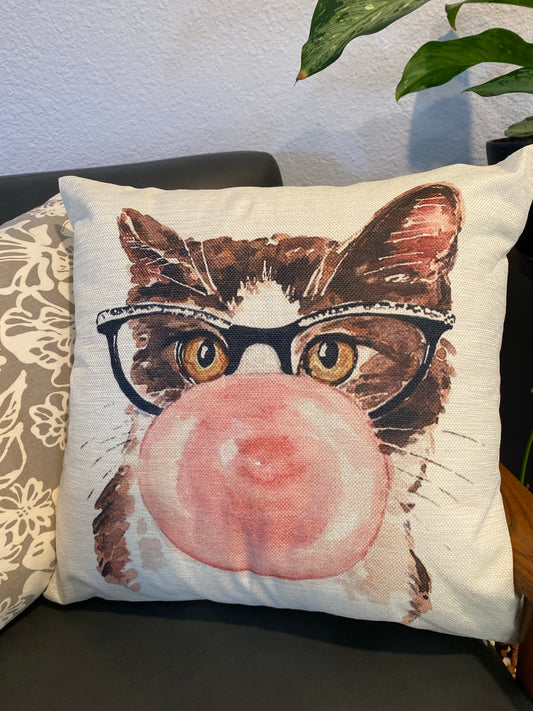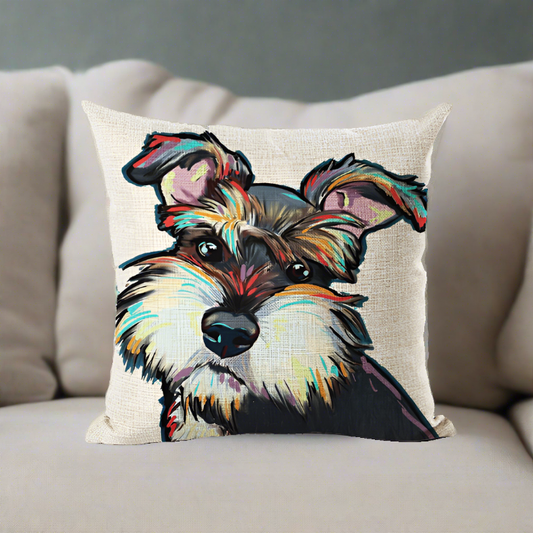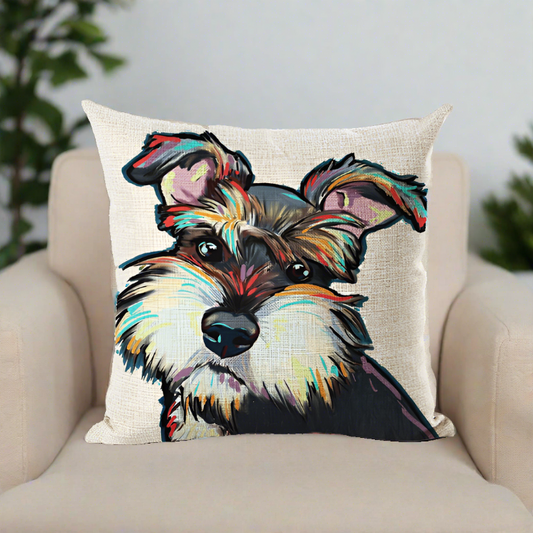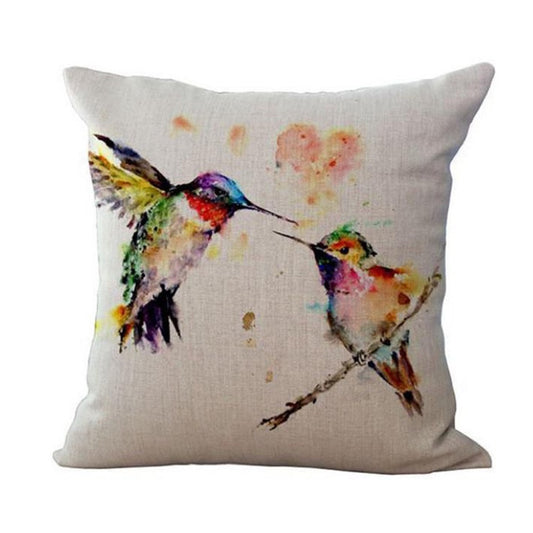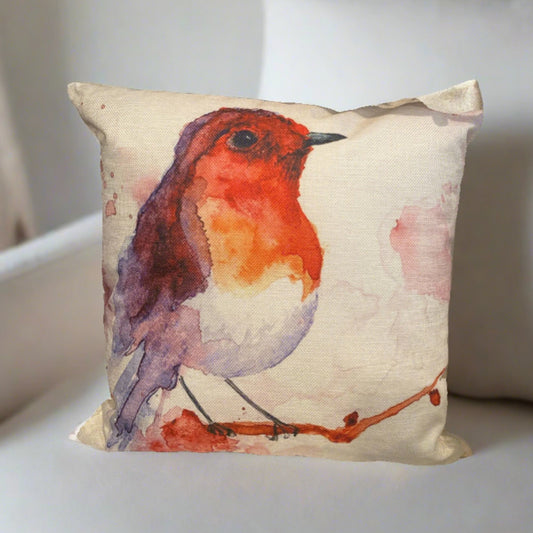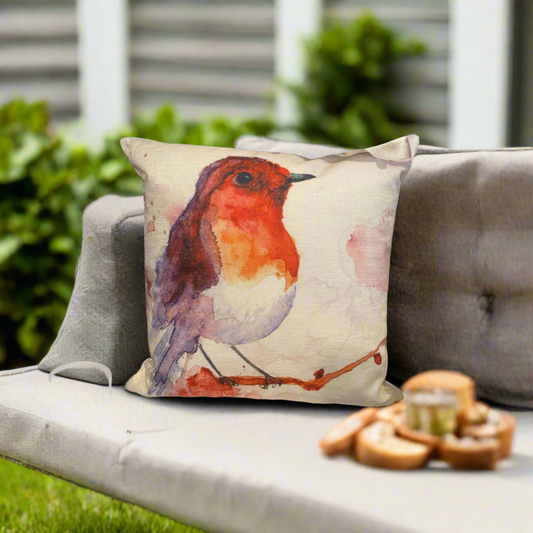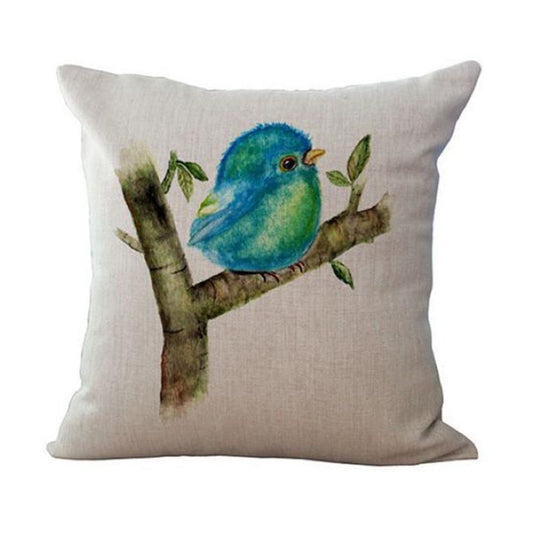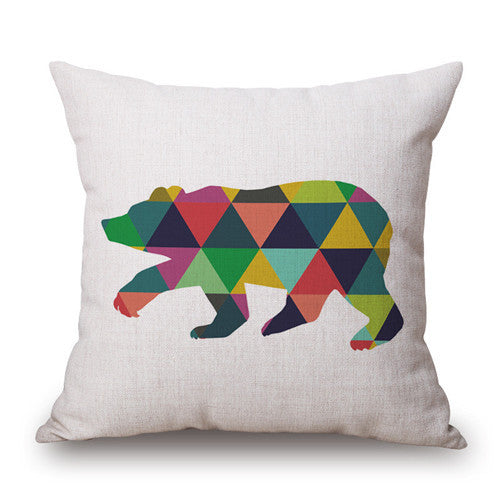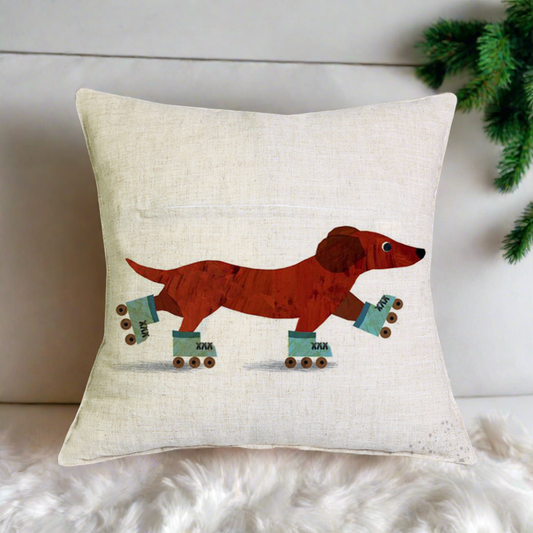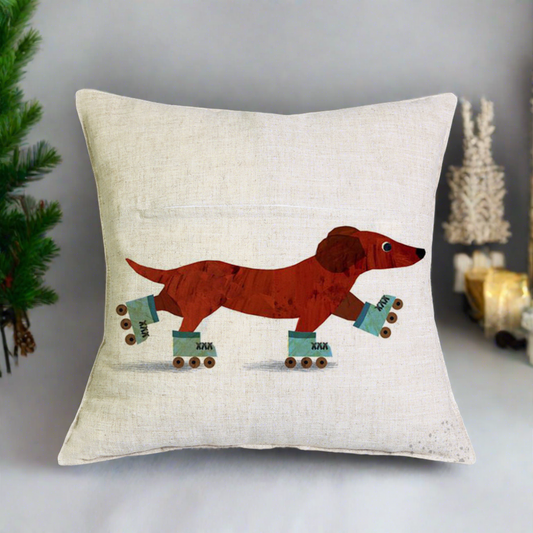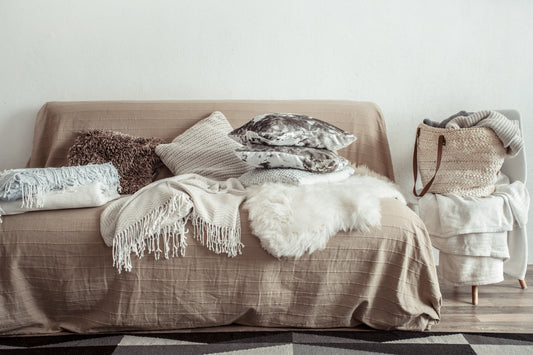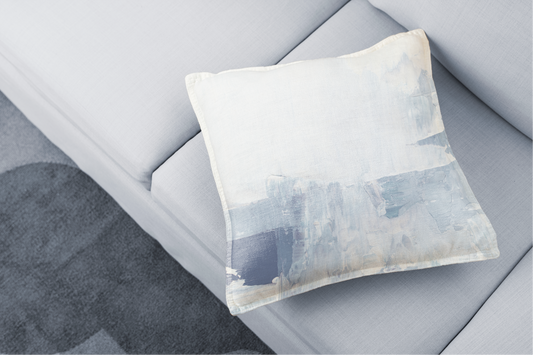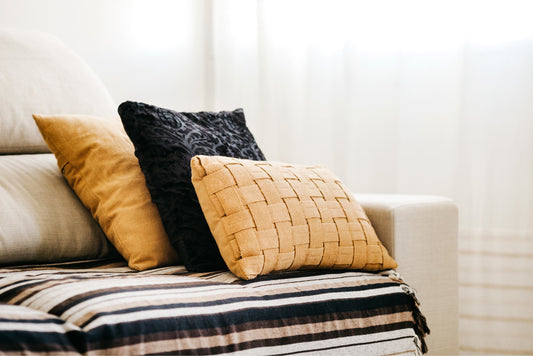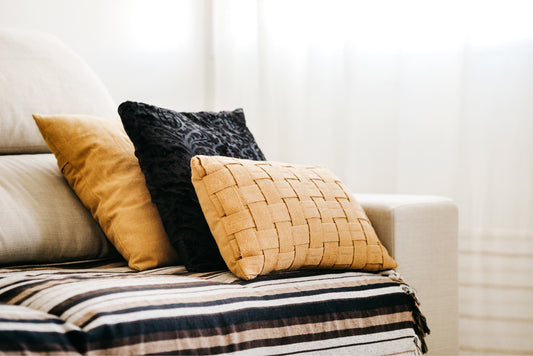When washing your couch cushion covers, use a cold, delicate cycle with dye-free detergent or pods. Remember to zip the covers closed to protect the cushions. After washing, air dry the covers instead of using a machine dryer to prevent damage from heat or shrinking. Take necessary precautions before washing to avoid damage to the covers.
What to Consider Before Washing Couch Cushion Covers
Importance of Checking Manufacturer's Care Instructions
Before you start washing your couch cushion covers, always check the manufacturer's care instructions. These guidelines offer the best advice on how to clean your specific fabric. Ignoring them might lead to damage such as shrinking, fading, or weakening of the fabric. Look inside the cushion covers for a care label or visit the manufacturer's website.
Risks of Not Following Care Guidelines
Not following care guidelines can result in several risks. For instance, washing a dry-clean-only fabric in water might cause it to lose its shape or color. Using the wrong detergent can leave stains or residues. To avoid these issues, read and adhere to the care instructions meticulously.
Identifying Fabric Type and Ease of Washing
Identifying the fabric type is crucial to determine how easy it will be to wash your couch cushion covers. Here are some common fabric types:
- Cotton: Usually machine washable but may shrink if not handled properly.
- Polyester: Generally easy to clean and resistant to shrinking.
- Leather: Requires special cleaners; never put in a washing machine.
- Velvet: Often needs professional cleaning due to delicate fibers.
Knowing your fabric type will help you choose the right cleaning method and avoid damage.
Special Considerations for Attached Cushions or Armrests
Attached cushions and armrests require special treatment. Since you can't remove these parts, spot cleaning is usually the best option. Use a mild detergent and a clean cloth to gently blot the area. For armrests, consider using covers to protect them from spills and stains. Ensuring you handle these attached parts with care will keep your couch looking great without causing damage.
By following these steps, you can confidently clean your couch cushion covers while preserving their appearance and longevity.
How Often Should You Wash Couch Cushion Covers?
General Recommendations for Vacuuming and Deep Cleaning
You should vacuum your couch cushion covers weekly to remove dust, crumbs, and pet hair. Deep cleaning, however, is recommended at least twice a year. Regular vacuuming keeps dirt from embedding into the fabric, making it easier to keep your cushions clean in the long run.
Factors Influencing Cleaning Frequency
Several factors can affect how often you need to wash your couch cushion covers:
- Usage: If your couch is frequently used, it will require more frequent cleaning.
- Environment: Homes situated in dusty areas may need more regular cleaning.
- Spills and Accidents: Immediate action on spills can reduce the need for frequent deep cleaning.
Impact of Pets and Children on Cleaning Schedule
Pets and children can significantly increase the need for washing couch cushion covers:
- Pets: Pet hair, dander, and occasional accidents mean you should wash more often.
- Children: Kids are prone to spills and stains, making it essential to clean more frequently.
Benefits of Regular Maintenance
Regular maintenance offers several benefits:
- Longevity: Keeps fabric from wearing out quickly.
- Appearance: Maintains the aesthetic appeal of your couch.
- Hygiene: Reduces allergens like dust mites and pet dander.
By following these guidelines, you can ensure your couch cushion covers remain clean and fresh, extending their life and keeping your home looking great.
What You'll Need to Wash Couch Cushion Covers
Equipment and Tools
Before starting the cleaning process, gather the necessary equipment and tools:
- Vacuum Cleaner: Essential for removing loose dirt, crumbs, and pet hair before washing.
- Clean Cloths: Use these for wiping down surfaces and blotting stains.
- Spray Bottle: Ideal for applying cleaning solutions evenly on the fabric.
Materials for Different Fabric Types
Different types of fabric require specific materials for optimal cleaning.
For Fabric Covers
Fabric covers are common and generally straightforward to clean. You will need:
- Mild Detergent: Choose one that is free of dyes and perfumes to avoid staining the fabric. Tide-Free & Gentle is a good option.
- Stain Remover: Useful for pretreating tough spots. Apply it directly to the stain and let it sit for a few minutes before washing.
- Dry-Cleaning Upholstery Solvent or Baking Powder: For dry-clean-only fabrics, these materials can help. Apply the solvent according to the package instructions, or sprinkle baking powder on the cover, let it sit for an hour, then vacuum it off.
For Leather Covers
Leather requires special care to maintain its appearance and texture. You'll need:
- Leather Cleaner: This removes dirt and oils without damaging the leather. Use a product designed specifically for leather, like Leather Honey.
- Leather Conditioner: After cleaning, apply a conditioner to keep the leather soft and prevent cracking. Lexol Leather Conditioner is a popular choice.
Having the right tools and materials ensures that your couch cushion covers get thoroughly cleaned without damage, keeping them looking fresh and new for longer.
How to Spot Clean Couch Cushion Covers
Ideal Situations for Spot Cleaning
Spot cleaning is perfect for small stains that appear between deep cleanings. It's also useful for cleaning attached cushions or armrests, which can't be removed and machine washed. For example, if someone spills a drink or your pet leaves a small mess, spot cleaning is the quickest solution.
Step-by-Step Spot Cleaning Process
Follow these steps to effectively spot clean your couch cushion covers:
- Blot the Stain: Use a clean cloth to blot the stained area. Avoid rubbing, as this can push the stain deeper into the fabric.
- Apply Cleaning Solution: Mix a cup of water with a teaspoon of mild dish detergent in a spray bottle. Lightly spray the stained area.
- Blot Again: Use another clean cloth to blot the area, removing the detergent and lifting the stain.
- Rinse: Apply a small amount of water to rinse out any remaining detergent.
- Dry: Blot the area with a dry cloth to remove excess moisture and let it air dry completely.
Tips for Effective Stain Removal
- Act Quickly: The sooner you address a stain, the easier it will be to remove.
- Test First: Before applying any cleaning solution, test it on a small, hidden area of the fabric to ensure it doesn't cause discoloration.
- Use Appropriate Cleaners: For different types of stains, different cleaners work best. For instance, use an enzymatic cleaner for pet stains and a mixture of vinegar and water for food spills.
Preventing Damage During Spot Cleaning
To avoid damaging your couch cushion covers:
- Gentle Blotting: Always blot gently rather than scrubbing to prevent the fabric from fraying or pilling.
- Avoid Excess Moisture: Too much water can cause water spots or mold growth. Use minimal liquid and ensure the area dries completely.
- Check Manufacturer's Instructions: Always refer to the care label on your cushion covers for specific cleaning instructions to avoid any damage.
By following these steps and tips, you can keep your couch looking clean and fresh without the need for frequent deep cleanings.
How to Wash Couch Cushion Covers With Machine Washable Fabric
Steps for Machine Washing
Vacuuming the Cushions
Begin by vacuuming the cushions thoroughly. This step removes any loose dirt, dust, or crumbs that could interfere with the washing process. Use the upholstery attachment on your vacuum cleaner, moving it over the cushions in a systematic manner. Tip: Focus on seams and crevices where debris tends to accumulate.
Removing and Preparing Cushion Covers
Next, unzip and remove the couch cushion covers. Turn them inside out to protect the outer fabric during washing. Important: Check for any small items or debris inside the covers before placing them in the washing machine. This ensures nothing gets trapped and causes damage.
Pretreating Stains Effectively
Before washing, inspect the covers for any stains. Use a gentle stain remover or a bit of mild detergent directly on the stains. Key Step: Let the pretreatment sit for about 15 minutes to break down the stains. This makes the washing process more effective.
Choosing the Right Cleaner and Cycle
When selecting a detergent, opt for a dye-free and mild formula to prevent any discoloration. Place the cushion covers in the washing machine and choose a cold water setting with a gentle cycle. Remember: Cold water helps prevent shrinking and color fading, while the gentle cycle reduces wear on the fabric.
Drying Tips to Prevent Shrinking
After washing, it's crucial to dry the covers correctly to avoid shrinking. Most experts recommend air drying, even if the label indicates the covers can be tumble dried. Best Practice: Lay the covers flat on a drying rack or hang them up. If you must use a dryer, select a low heat setting and remove the covers while they are still slightly damp. This makes it easier to fit them back onto the cushions and helps smooth out wrinkles. Extra Tip: Stand the cushions up on their sides to allow air to circulate and speed up the drying process.
By following these detailed steps, you can keep your machine washable couch cushion covers looking fresh and new, while extending their lifespan.
How to Wash Couch Cushion Covers With Dry Cleanable Fabric
Identifying Dry Clean Only Covers
First, determine whether your couch cushion covers are dry clean only. Look for labels inside the covers indicating cleaning instructions. Key Indicator: The label will often have an "S" for solvent-based cleaning. If you can't find a label, check the manufacturer's website for care details.
Professional Cleaning vs. Home Cleaning
Deciding between professional cleaning and doing it yourself is crucial. Professional Cleaning: Involves taking your covers to a dry cleaner who uses specialized equipment and solvents. This method is reliable but can be costly. Home Cleaning: Can be effective if done carefully, using the right products. It's cheaper but comes with the risk of damaging the fabric if not done properly.
Using Upholstery-Friendly Solvents
When opting for home cleaning, use an upholstery-friendly solvent. These products are specifically designed for dry clean only fabrics. Steps to Follow:
- Ventilation: Ensure the area is well-ventilated.
- Testing: Test the solvent on an inconspicuous area of the fabric to check for any adverse reactions.
- Application: Apply the solvent to a clean, white cloth and gently blot the stained areas. Avoid soaking the fabric.
Alternative Methods with Baking Soda
If you prefer a more natural approach, baking soda can be a great alternative. Method:
- Sprinkling: Evenly sprinkle baking soda over the entire cushion cover.
- Waiting: Let it sit for at least an hour to absorb odors and loosen dirt.
- Vacuuming: Vacuum the baking soda off thoroughly, ensuring no residue remains.
Pro Tip: For tougher stains, create a paste using baking soda and a small amount of water. Apply this to the stain, let it dry, then vacuum it up.
By following these steps, you can effectively clean dry clean only couch cushion covers without risking damage to the fabric.
How to Wash Leather Couch Cushion Covers
Steps for Cleaning Leather Covers
Initial Vacuuming to Remove Debris
Begin by vacuuming the leather couch cushion covers. Why is this essential? You need to clear away dust and loose debris that can scratch the leather during cleaning. Use a vacuum cleaner with a soft brush attachment. Steps:
- Attachment: Attach the soft brush to your vacuum.
- Gentle Movements: Move the vacuum over the cushions gently to avoid damaging the leather.
- Corners and Creases: Pay extra attention to seams and creases where dust accumulates.
Cleaning with Leather Cleaner
Leather requires a specialized cleaner to maintain its integrity. Product Tip: Use a leather cleaner specifically designed for furniture. Application Steps:
- Damp Cloth: Dampen a clean cloth with the leather cleaner.
- Test First: Test on a hidden area to ensure it doesn’t discolor the leather.
- Gentle Wiping: Wipe the leather in small sections, applying the cleaner evenly.
- Circular Motion: Use circular motions to lift dirt without soaking the leather.
Applying Leather Conditioner
Conditioning leather is crucial to keep it supple and prevent cracking. Why? Leather can dry out and become brittle if not conditioned regularly. Steps:
- Clean Cloth: Use a different clean cloth to apply the conditioner.
- Small Amounts: Start with a small amount; you can always add more if needed.
- Even Application: Spread the conditioner evenly across the surface.
- Let it Soak: Allow the conditioner to soak into the leather for the recommended time on the product label.
Ensuring Even Cleaning for a Uniform Look
To ensure your leather couch cushion covers have a uniform look:
- Consistent Technique: Use the same cleaning and conditioning technique across the entire surface.
- Overlap Sections: Slightly overlap sections when cleaning and conditioning to avoid lines and streaks.
- Final Buff: After the conditioner has soaked in, use a dry, clean cloth to buff the leather. This removes any excess product and brings out the leather’s natural shine.
By following these detailed steps, you can maintain the beauty and longevity of your leather couch cushion covers.
Frequently Asked Questions (FAQ)
Can I Wash Couch Cushion Covers in the Washing Machine?
Appropriate cleaning products and cycles:
- Mild Detergent: Use a mild, dye-free detergent. Detergents with dyes can stain upholstery.
- Delicate Cycle: Select the delicate cycle on your washing machine. This minimizes agitation, which prevents fabric damage.
- Cold Water: Always use cold water. Hot water can cause shrinkage and weaken fibers.
Precautions to avoid damage:
- Check Labels: Always check the care label inside the cushion covers.
- Zippers and Buttons: Zip up all zippers and secure any buttons to prevent snags.
- Inside Out: Turn covers inside out to protect the outer fabric during washing.
How to Wash a Sofa Cushion?
Detailed steps for deep cleaning removable cushions:
- Remove Cushion Covers: Carefully unzip and remove the covers.
- Vacuum: Vacuum the cushion foam to remove dust and debris.
- Spot Clean: Treat any visible stains on the foam with a mild detergent solution.
- Soak in Tub: Fill a bathtub with lukewarm water and a small amount of mild detergent, then soak the cushion foam.
- Rinse and Dry: Rinse thoroughly with clean water, then press out excess water. Allow the foam to air dry completely.
Balancing cleaning efficiency and fabric care:
- Gentle Handling: Handle the foam gently to avoid tearing.
- Proper Drying: Ensure the foam is fully dry before putting the covers back on to prevent mold growth.
Are Cushion Covers Machine Washable?
Proper washing techniques:
- Pre-Treat Stains: Apply a stain remover to any visible spots before washing.
- Use a Laundry Bag: Place cushion covers in a mesh laundry bag to prevent tangling.
- Gentle Spin: Use a gentle spin cycle to avoid stretching the fabric.
Importance of cold, delicate cycles:
- Cold Water: Cold water helps preserve the fabric and color.
- Delicate Cycle: Reduces wear and tear, prolonging the lifespan of the covers.
How Should I Wash Sofa Covers?
Best practices for washing upholstery covers:
- Read Manufacturer’s Instructions: Follow any specific care instructions provided by the manufacturer.
- Minimal Detergent: Use a minimal amount of detergent to avoid residue buildup.
- Avoid Fabric Softeners: Fabric softeners can coat the fibers, making them less breathable.
Tips to prevent shrinking and damage:
- Air Dry: Air drying is preferable to using a dryer. If you must use a dryer, opt for a low heat setting and remove covers while still slightly damp.
- Re-shape While Damp: Put the covers back on the cushions while they are slightly damp to help them retain their shape.
- Avoid Direct Sunlight: Drying in direct sunlight can cause fading and damage the fabric.
By following these guidelines, you can keep your couch cushion covers clean and in good condition, ensuring they last for years to come.




